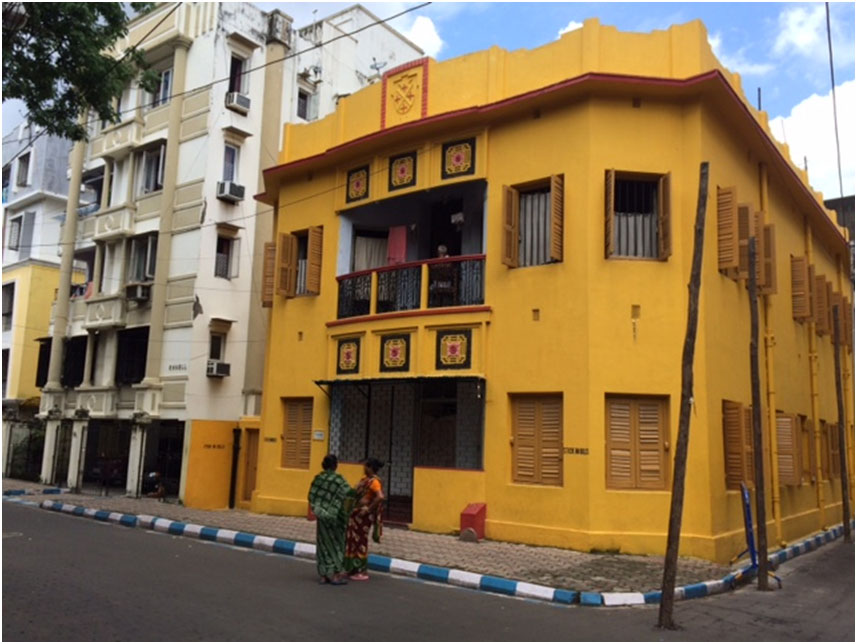Exemplary Houses of Calcutta by Rabindra Vasavada
Exemplary Houses of Calcutta: A Response to the Bengal Renaissance
A Preliminary Photo-Documentation within areas suggested by Amit Chaudhuri: 20th August 2017
Rabindra J Vasavada, Architect
Acknowledgements:
I express my gratitude at the outset to CAL 2016 and particularly to Amit Chaudhuri for inviting me and Sanjay Sridhar to Calcutta for a talk on 18th of August. This was our third visit there together and I was able to actually spare half a day on 20th August to visit some residential areas in south Calcutta, very kindly recommended by Amit. These areas included Paddapukur Road area and Bakul Bagann-Beltalla Road, Dover Terrace and Dover Lane Area, Pratapaditya Road area in south Calcutta. The details of the locations are given on the photographs, which are arranged as per their orientation of frames for better viewing. The following note explains my intense desire to focus on the study of neighbourhoods –para- in Calcutta. This is an ongoing study which will concentrate on more areas and further details of the buildings in near future.
Introduction to Studies on para and residential buildings:
Calcutta’s (Kolkata’s) urbanity is unparalleled in India. Broadly the city has two distinct parts which are situated to north and south of the Maidan, which in itself is a phenomenal colonial concept of open place and a separator adopted by the British while planning their colonial cities in India. It has an extremely pronounced streetscape which lends its urbanity a very strong character with buildings built over a period of time. The settlement patterns of urban neighbourhoods with prominent street aspects help one to observe the layers of this important city.
The northern part, though dotted with colonial sensibilities of built traditions, is with a settlement pattern more ‘organic’ and endogenous in its planning punctuated by large mansions and Rajabari built in colonial idiom with large internal courtyards dominating the entire settlement pattern. The southern part of the city has newer settlements of para which were populated by the rich merchant class and by professionals, whose preferences for built forms were influenced by British era as well as European sensibilities, amounting to a rich heritage of urban living-characteristic of progressive ideals.
Calcutta’s historic layers signify a rich combined heritage of European, British, and Indian culture which certainly is unique. Bengal also experienced a very progressive period in late 19th and early 20th centuries with thinkers and reformers, who through their works initiated new ways of looking at their cultural traditions. Ideas to do with integrating modern thoughts emanating from western culture into their own cultural traditions were demonstrated by many prominent artists, musicians, scholars, writers and social reformers through their works, which actually became a significant force to revitalise the life of people and eventually their built environment. This is strikingly displayed in their preferences in lifestyle and houses and for this reason studying the residential buildings of early 20th century would allow us an opportunity to actually understand this phase of Indian Modernity, which eventually spread all over the country.
The Photo-documentation of the residential buildings in the areas mentioned above is compiled with 24 images in two sets. The locations of the buildings are marked on each photo. Further work involves additional data collection for the details of the property and the owners, which would be undertaken in due course.



